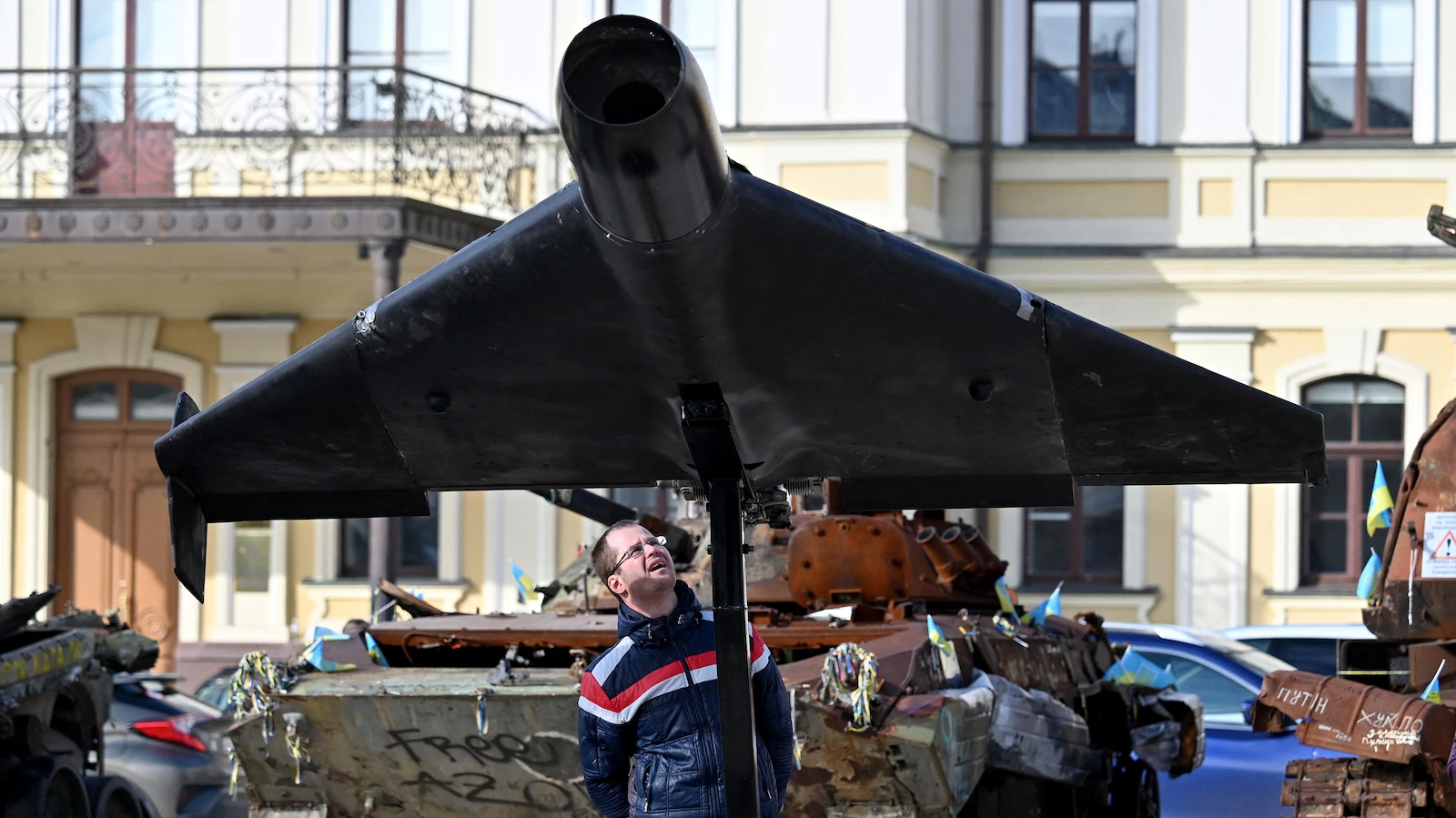Copyright ABC News

LONDON -- The rates of interception of both Russian drones and missiles fired into Ukraine through October slipped as Moscow continued its long-range bombardment of Ukrainian cities and critical infrastructure, Ukrainian air force data analyzed by ABC News showed. Of the 5,312 drones of all types launched into Ukraine across last month, Ukrainian defenders shot down or suppressed 4,242 -- just under 80% -- according to air force data. October's drone interception rate was the lowest of 2025 to date. Ukraine's month-to-month success rates in facing Russian drones has declined from more than 90% at the start of this year to around or just over 85% in August and September. Interception rates do not tell the complete story of the conflict, but they offer a view into a key ongoing aspect of the war as both Moscow and Kyiv seek to weaken the other’s resolve, military-industrial capacities and negotiating positions. As attritional day-to-day fighting continues all along the front line, Russia and Ukraine trade nightly and ever-growing aerial assaults. Neither side provides detailed data on the scale of their attacks or their targets. Both, though, do offer limited information on their day-to-day air defense actions. It is not clear what is behind last month's reduced interception rates. Military analysts who spoke to ABC News suggested there could be several factors at play, including the dramatically increasing number of drones Russia is launching, a lack of munitions and, perhaps, the weather. And Ukrainian officials have issued only the statistics, rather than a detailed breakdown of defensive actions. ABC News cannot independently verify the aerial engagement data provided by either the Ukrainian or Russian armed forces. It is possible that both sides may seek to exaggerate the effectiveness of their air defenses. Before October, the lowest reported average monthly rate of interception was in August when just over 85% of Russian craft were defeated. October's rate of missile interception, meanwhile, was the lowest recorded by Ukraine's air force since April. Of the 270 missiles launched into the country in October, 146 or 54% were shot down or suppressed, the air force data showed. The diminished success rates of Ukraine's air defense teams come as Moscow expands its strikes against critical infrastructure -- particularly energy targets -- all across the country coinciding with the onset of wintry weather. Ukrainians are now facing widespread blackouts as state transmission system operator Ukrenergo races to repair the damaged network. Ukrenergo said power would be cut for between eight and 16 hours across most regions of the country on Sunday, after Russian attacks cut power generating capacity to "zero." "These days, in most regions, repair crews, power engineers, and utility services are virtually working around the clock," President Volodymyr Zelenskyy wrote on Telegram on Sunday. "The Russians have increased their striking power." Meanwhile, the civilian toll continues to rise. At least 214 people were killed and almost 1,000 were injured in Russian strikes across the country in September 2025, according to the U.N. Human Rights Monitoring Mission in Ukraine. That represented a significant jump on casualty figures from August when 58 civilians were killed. October’s was a similar picture to July and June, when 286 and 232 civilians were killed, respectively. Ukraine air force spokesperson Yuiry Ihnat told ABC News, "Everything is separate, you can't rely only on statistics. It all depends on the nature of the shelling and the situation." The strain on Ukraine's air defense network is no secret. Zelenskyy and his top officials have consistently warned that the country's defensive umbrella is not adequate and requires more Western contributions. Ukraine, officials have said, is lacking both the platforms and ammunition required to fully defeat Russia's attacks. Supplies are depleted by massed drone barrages -- of both strike and decoy craft -- twinned with missiles of various types. Defeating drones with Ukraine's most advanced surface-to-air missile systems -- like the U.S.-made Patriot or the German-made IRIS-T -- is expensive and quickly drains Kyiv's arsenal. Interceptor missiles for such platforms can cost as much as $4 million each. Russian Shahed strike drones can cost as little as $20,000, according to an estimate from the Center for Strategic and International Studies think tank. Decoy Gerbera drones are even cheaper, and can cost as little as $10,000. Russia is "using more and more" munitions, Oleksandr V. Danylyuk -- an associate fellow at the Royal United Services Institute think tank in the U.K. and the chairman of the Center for Defense Reforms think tank in Kyiv -- told ABC News. "We just don't have enough interceptors." Ukraine has been investing heavily in more cost-efficient electronic warfare and interception drone technologies in a bid to better balance its defensive expenditure, Zelenskyy has said. But the size of Russian barrages are rapidly growing, and the sophistication of its drones and missiles are improving as Moscow applies the lessons learned from their nightly bombardments. Ivan Stupak, a former officer in the Security Service of Ukraine (SBU), told ABC News that the scale and complexity of Russia's attacks is causing problems for Ukrainian defenders. "The average number of drones during 2025 is 4,400 per month," he said. "Day-to-day, it's become more difficult to intercept them." And all the time, he added, Russia is enhancing its drones -- for example with more advanced anti-jamming technology and jet engines -- making them harder to spot and to stop. Ukraine's persistent manpower strain is also playing a role, Stupak said. "Ukrainian anti-aircraft units and mobile fire brigades are depleted -- lots of them were disbanded and deployed to the front as regular infantry," said Stupak, who earlier in the war advised Ukrainian parliamentarians on security matters. Some areas like the capital Kyiv are better defended than others, Danlyuyk said, with other regions more vulnerable. "The Russians started hitting targets in the countryside and there is not the same level of air defense there," Danylyuk said. "So, they're more successful." Pasi Paroinen of the Finland-based Black Bird Group open-source intelligence analysis organization said winter weather may be playing a role, particularly for Ukraine's mobile air defense teams which rely on relatively low-tech solutions -- like autocannons and machine guns mounted on vehicles -- to shoot down drones and cruise missiles flying overhead. "If the weather is bad, the visibility is bad," Paroinen said. "It's a factor in the ground warfare on the front lines as well, so I could imagine that it would affect this side."



